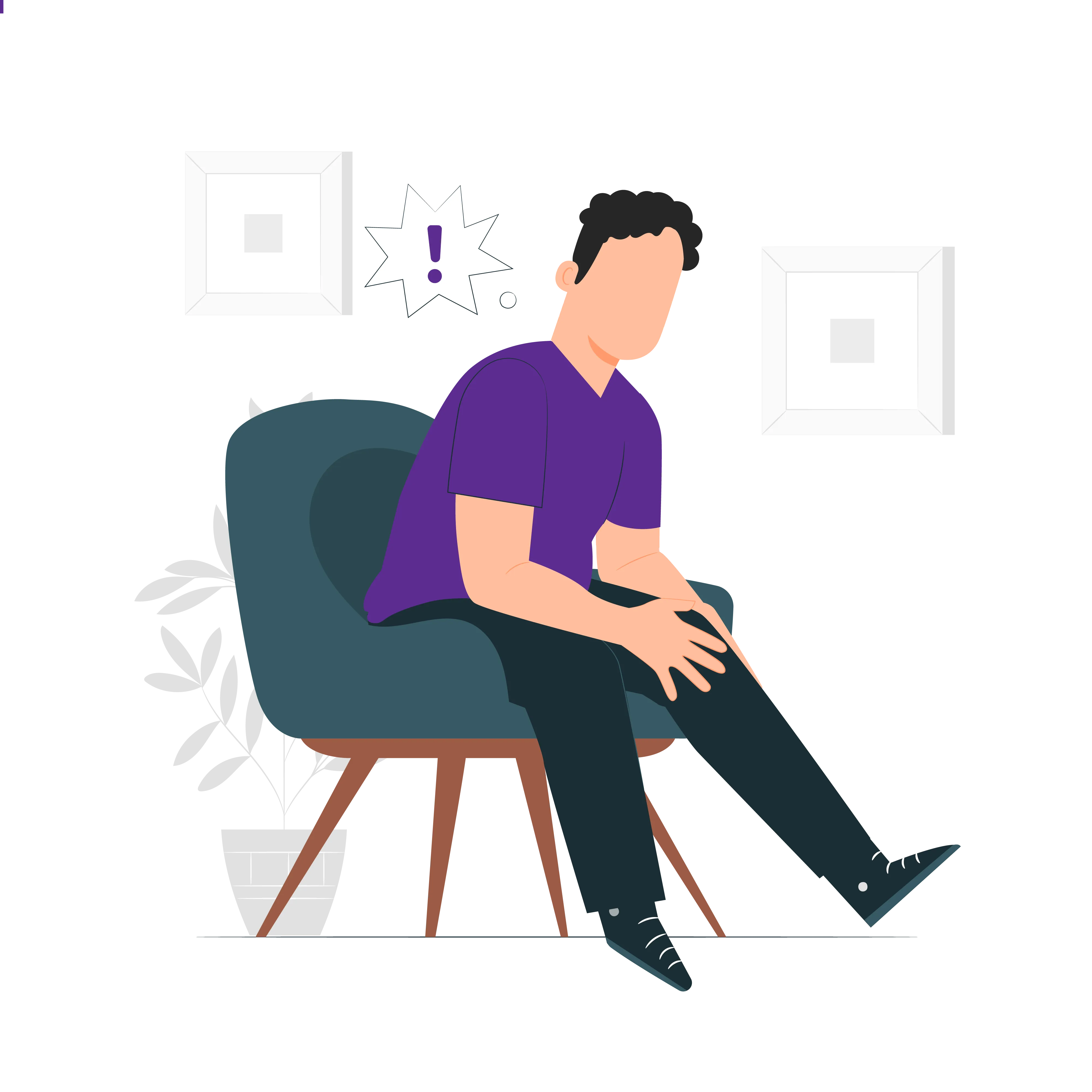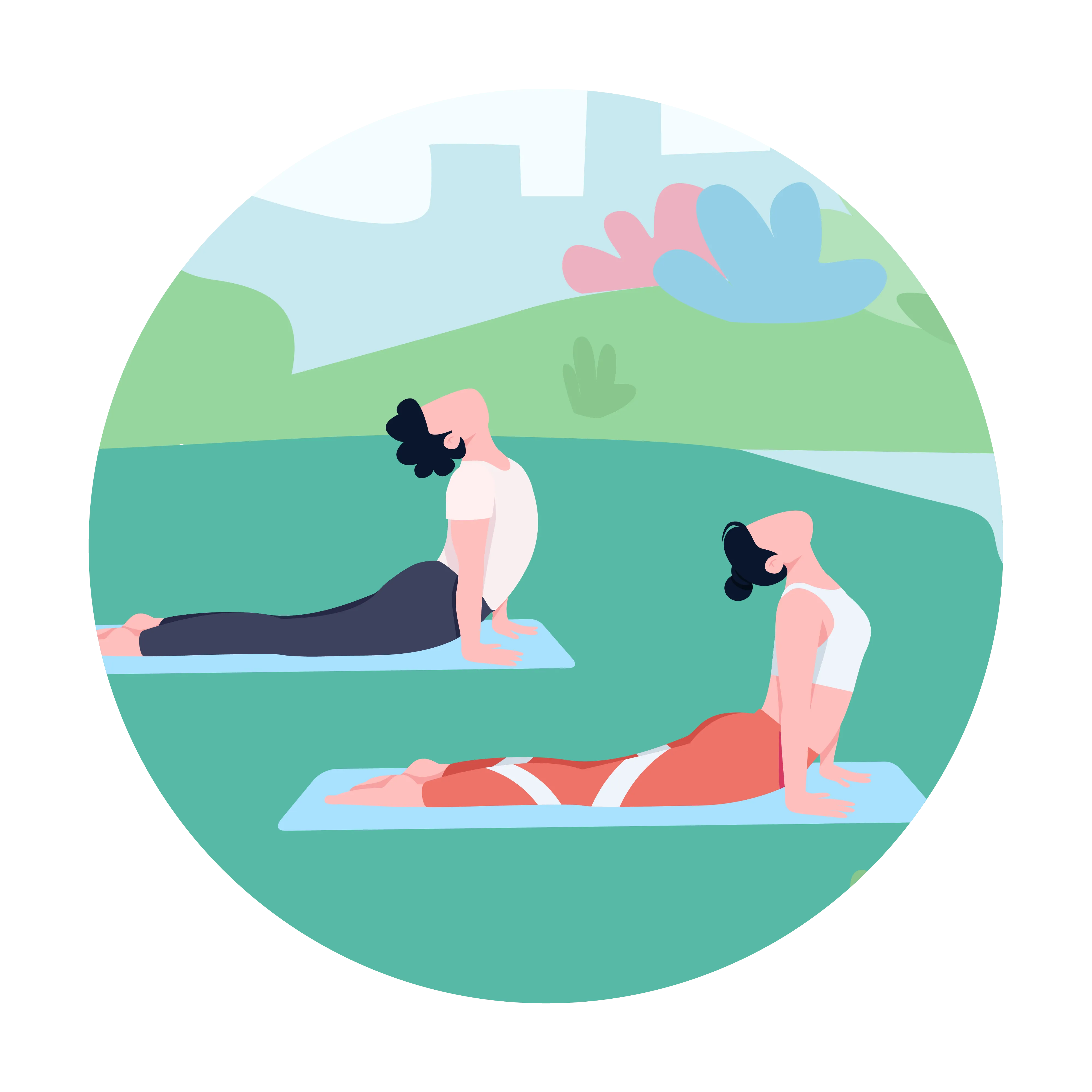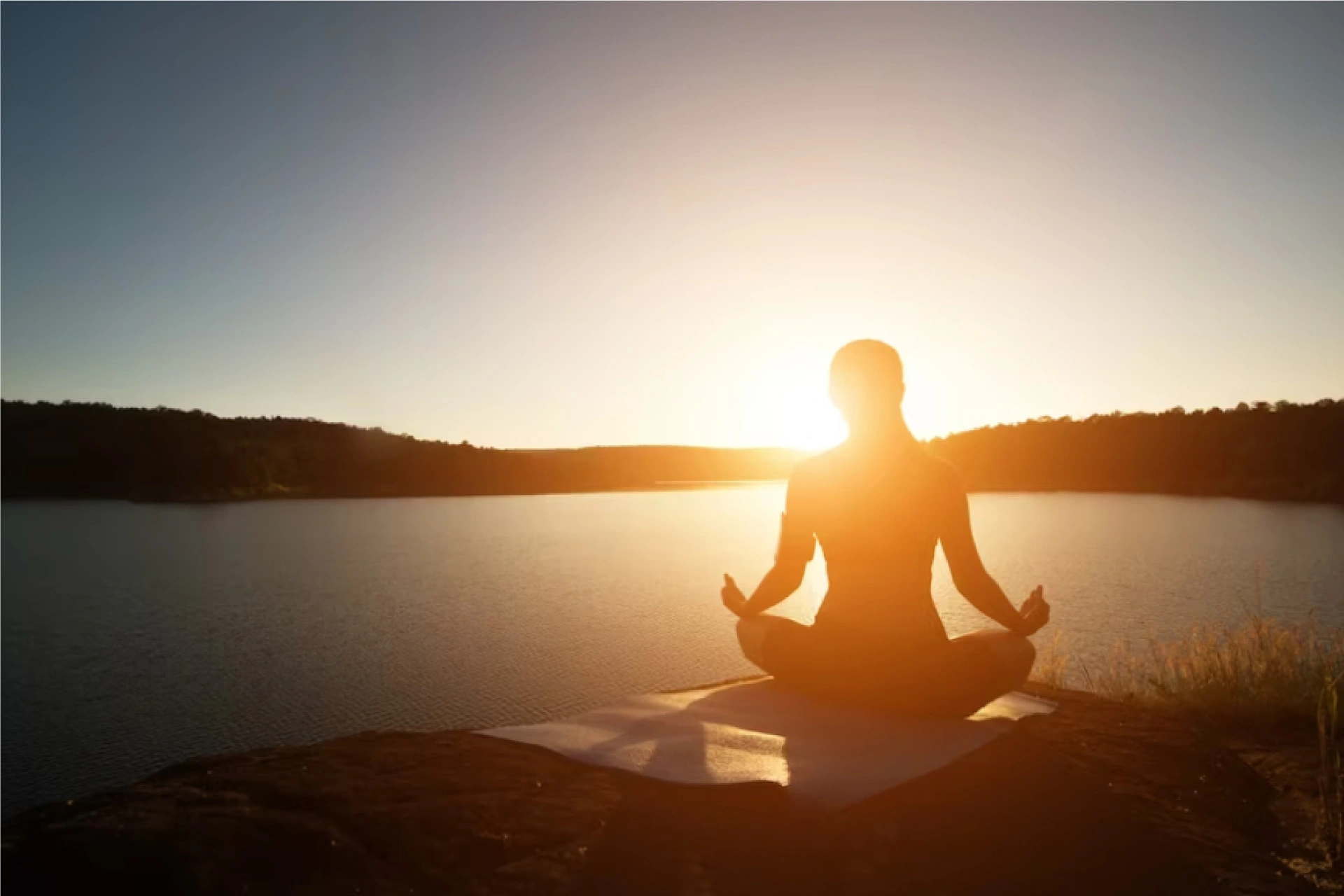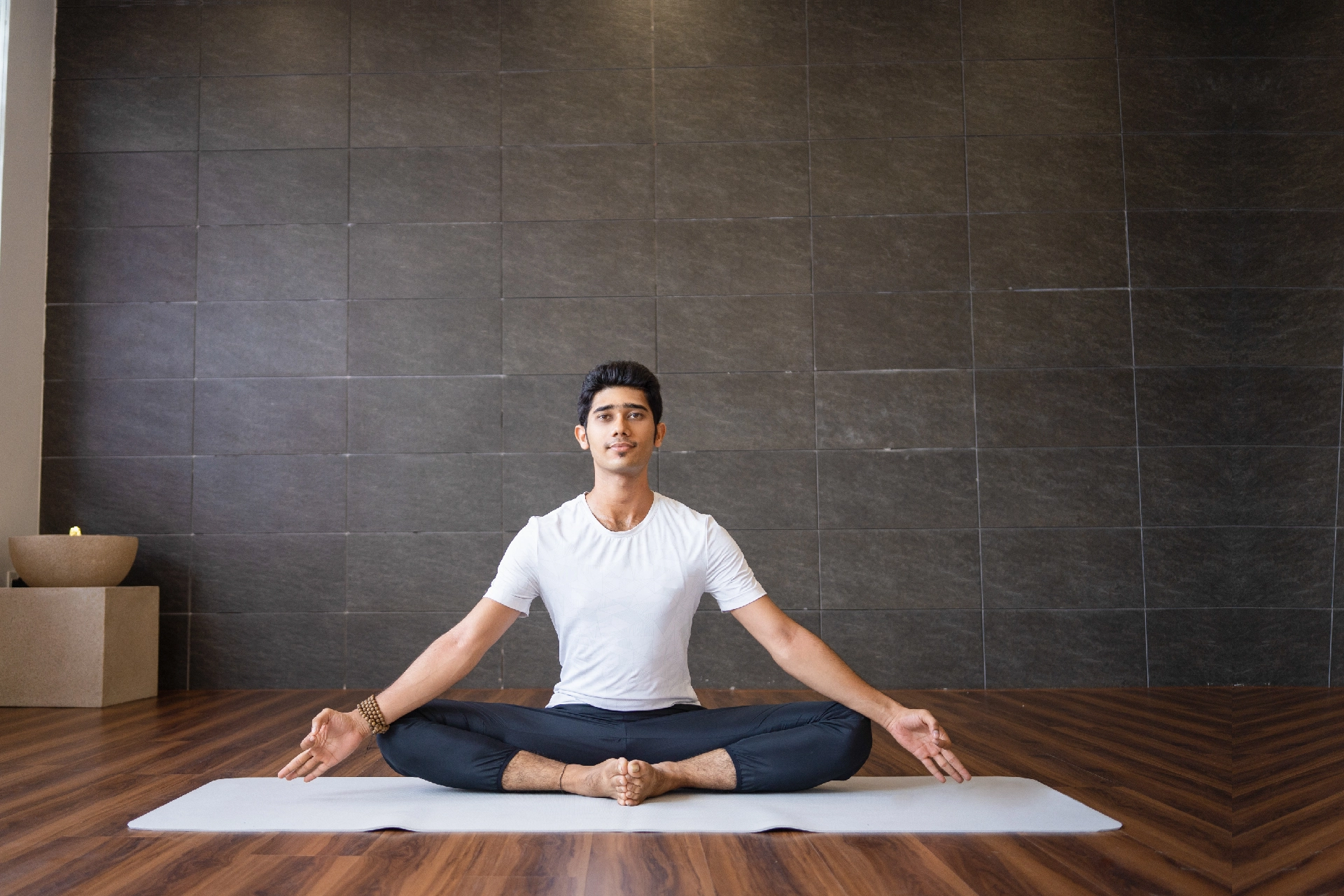Physiotherapist | 9 min read
Yoga For Sciatica For Beginners With Steps And Precautions
Medically reviewed by
Table of Content
Key Takeaways
- Cobra pose is one of the effective yoga asanas for sciatica
- Knees-to-chest pose is the best yoga for sciatica pain relief
- Practice one-legged pigeon pose asanas for sciatica symptoms
The nerve pain people sometimes feel in the leg is called sciatica. It occurs when your sciatic nerve gets compressed. While this condition occurs initially in the lower back, it then travels to the leg. Being one the longest nerves of the body, the sciatic nerve connects your spinal cord with your leg and thigh muscles. When the sciatic nerve stretches, you may feel a burning sensation in your lower back and feet. Some of the most common symptoms of sciatica include the following:
- Feeling numb at the back of your leg
- Facing problems while trying to sit, stand, or even lie down
- Having a sudden shooting pain in your lower back
- Feeling heavy in one leg
- Doing yoga helps to ease your lower back pain and other sciatica symptoms. This practice makes your body flexible apart from strengthening your core muscles. While you may not be able to do complex yoga poses due to pain, you can try doing simple ones. This helps relieve or minimize your lower back pain, as per a study [1].
What is Sciatica and How Does Yoga Help?
The sciatica nerve present in the body stretches from the lower back to the buttocks, thighs, and lower side legs. An injury or irritation to the sciatica nerve gives rise to pain in these areas. Sometimes when these muscles are overworked, that can also cause sciatica pain. The pain could range from moderate to severe, depending on the nature of the injury.
A 2013 research claimed that certain yoga asanas are helpful in treating sciatica pain. [1] Another study also indicates the ability of yoga to manage lower back pain, improve mobility and reduce dependency on painkillers. [2]
Yoga Poses For Sciatica
The yoga asanas mentioned below are known to be effective for preventing, soothing and healing sciatica pain:
Child’s Pose (Balasana)
It is a stretching exercise done in a kneeling position that targets your spine, thighs, hips, and lower back. You can also put a cushion under your chest or thighs for better support while doing this exercise.
- Kneel on the floor, sitting on your heels. Make sure your toes touch each other
- Let your knees join and stretch your arms in front of you
- Maintain this position for 5 minutes and practice deep breathing
Downward Facing Dog
This position involves bending your body forward for better alignment and minimizing pain and stiffness in the body. By pressing your hands on the floor, you will raise your hips.
- Bend your upper torso in a downward position
- Keep your head down and bring your ears to a similar level with your arms
- Try bending your knees so that your pelvis can go slightly up
- Move your body, maintaining these poses for 1 minute
Half Moon Pose (Ardhachandrasana)
This position stabilizes your body and improves balance. It increases the flexibility of the muscles by releasing tension and stretches your thighs and spine.
- Stand on your feet and then lift and stretch your left foot in the air
- Try for right angle triangle between your left and right feet
- Try bending your knees and placing your entire weight on your right foot
- Put your left hand on your hip
- Now create a posture where you place your right hand on the floor along the line of your right foot
- Raise your left leg and now rotate your main part of the body and the hip
- You should do this posture for 1 minute
Cobra Pose or Bhujangasana
This position strengthens your spine and improves blood circulation and flexibility in the body.
- Lie on your stomach and lift your shoulders up while putting pressure on your palms
- Keep your elbows tight against your body
- Next, try lifting your head, shoulders and chest while inhaling
- Do it for 30 seconds, and then you can repeat the steps for 1 or 2 minutes
Locust Pose or Salabhasana
This position relaxes your spine, thighs and lower back while improving blood circulation and flexibility in your hip area.
- Lie flat on your stomach
- Try lifting your head, chest and arms to a comfortable height
- Arms should be backwards along the line of your spine
- Raise your legs from your knees
- You must repeat these steps 1 or 2 times
Wind Relieving Pose (Pawanmuktasana)
This yoga posture releases tightness on your hips, buttock, and lower back.
- Lie on your back, joining the knees together, and pressing them toward your chest area.
- Next, join your knees and ankles and press them toward you.
- Your hand must reach the back of the thigh area while doing this
- You should do these steps for about 1 minute
So, get your mat and towel to try out these easy yoga poses for sciatica!
Stretch Your Lower Back With the Cobra Pose
This is one of the most effective asanas for sciatica. While it helps in stretching your spine, this pose also enhances your muscle flexibility and increases blood circulation. Follow these simple steps to perform this cobra pose.
- Place your hands under the shoulders while lying back on your stomach
- Ensure to squeeze your elbows properly into your body
- Inhale slowly and lift your head, shoulders and chest while doing so
- Keep the chest open and try bending your elbows slightly
- Continue this pose for about 30 seconds, release, and repeat for up to 3 times
Stabilize Your Core Muscles With the Locust Asana for Sciatica
Amongst beneficial yoga exercises for sciatica is the locust pose. To do this pose, lie on the stomach placing your fingers next to your spine. Slowly try lifting your chest, arms and head as much as possible. Then, try taking your arms away from your body while raising either one leg or both legs simultaneously. Be in this position for about 30 seconds and then relax. The locust pose enhances the strength of your spine and thigh muscles while increasing the flexibility of your hip.
Relieve Lower Back Pain With the Bridge Pose
Doing a bridge pose opens up your hip muscles while increasing the strength of your core and back muscles. The main aim of this pose is to keep your thighs and back aligned along a straight line. Ensure to raise your hips and bring them in line with your shoulders. Hold this position for about 30 seconds.
Additional Read: Importance of Yoga in Modern LifeDo a Knees-to-chest Pose for Yoga for Sciatica Pain Relief
This yoga pose stretches your lower back muscles and provides a lot of relief. [2] You should try this yoga pose and add it to your daily routine.
- Keep your legs in a straight position while lying on the floor.
- Check if the back of your knee is touching the ground or not.
- Start inhaling slowly and get your thighs up to your chest.
- Bend your knees and while doing it exhale.
- Hold your knee close to the chest with the help of your arm while ensuring that your back is flat.
- Remain in this pose for 30 seconds and do slow breathing.
- Exhale again by bringing your legs to the starting position.
Try the Cat-cow Pose to Loosen Tight Muscles
Among various yoga stretches for sciatica, the cat-cow pose aims to stretch the back muscles in pain. To do this pose, start by getting down on all fours with your hands and knees on the floor. Then, inhale, tighten your core and round your back toward the ceiling. This is called the cat stretch. After 5 seconds, exhale, go to a neutral back position, inhale, and point your tailbone out. This is called the cow stretch, and you must hold this position for 5 seconds and exhale. Alternate between the cow and cat stretch for up to 10 times.
Yoga Poses to Avoid When You Have Sciatica
Some yoga poses are believed to worsen the symptoms of sciatica. The downward-facing dog position should be avoided if you have sciatica, as this puts pressure on the lower back and the pelvis area. You can slightly alter the steps by lying down and bending forward. This would give comfort to your lower back and hip.
Any position that puts pressure on your legs or requires extensive leg movement should be avoided at any cost. This will accentuate your Sciatica and will cause you even more pain than reliving it.
If you are pregnant and suffer from sciatica, you should not do the downward-facing dog asana, as it puts pressure on your stomach. Instead, you can modify the poses by using cushions to avoid putting strain on the stomach.
How Does Yoga Help Relieve Sciatica?
For those who are experiencing sciatica pain managing regular activities becomes very difficult. Some gentle yoga practices can go a long way to manage this condition. Yoga asanas, in combination with conscious and prolonged breaths, provide great relief to people with sciatica. Yoga is a support base for patients to deal with pain and minimize future complications. However, yoga cannot replace any medical or physical therapy advised by a healthcare practitioner to treat sciatica. Yoga should be taken as a combined treatment approach. If performed in the right manner, certain yoga asanas help you get satisfactory results alongside your regular medical treatment.
Which Precautions to Take While Performing Yoga for Sciatica?
Always Do Yoga on an Empty Stomach
Yoga should be done with an empty stomach in the early morning hours or in the evening.
Diet
While doing yoga, you should take a lot of fruits and vegetables and drink lots of water to increase your fluid intake. Water cleanses and purifies your body from within.
Routine
You should make it a habit of doing yoga regularly and should not break the pattern. This will bring positivity to your whole body and mind and lead to your overall well-being.
Do Not Attempt Strenuous Exercises
You should do only those yoga asanas that are prescribed for you and never try the difficult and strenuous ones, especially if you have just started doing yoga or are an older person.
Clean Environment
Yoga should be done in a peaceful, well-ventilated, and clean environment. Doing yoga in a serene atmosphere will prove more effective for your body.
Take Help From a Yoga Teacher
Yoga should be done under the guidance of a yoga teacher, as this will help you do the steps in the right manner. Moreover, you will know what to do or what not to do while practicing yoga.
Now that you know how yoga and sciatica are connected, make it a point to practice these sciatic nerve stretches regularly. Doing yoga for sciatica pain relief is only something you can easily perform at home. If your sciatica pain shows no improvement even after regular stretching, talk to specialists on Bajaj Finserv Health. Get their expert advice by booking an appointment online and address your sciatica symptoms right away!
References
- https://www.ijoy.org.in/article.asp?issn=0973-6131;year=2013;volume=6;issue=1;spage=71;epage=75;aulast=Sing
- https://www.ncbi.nlm.nih.gov/pmc/articles/PMC2792123/
- https://www.spine-health.com/blog/best-yoga-poses-sciatica-relief
- https://www.spine-health.com/conditions/sciatica/what-you-need-know-about-sciatica
- https://www.healthline.com/health/yoga-for-sciatica#locust-pose
- https://www.yogabeyondthestudio.com/blog/yoga-for-beginners/yoga-for-sciatica-6-best-yoga-poses-for-sciatica-pain/
Disclaimer
Please note that this article is solely meant for informational purposes and Bajaj Finserv Health Limited (“BFHL”) does not shoulder any responsibility of the views/advice/information expressed/given by the writer/reviewer/originator. This article should not be considered as a substitute for any medical advice, diagnosis or treatment. Always consult with your trusted physician/qualified healthcare professional to evaluate your medical condition. The above article has been reviewed by a qualified doctor and BFHL is not responsible for any damages for any information or services provided by any third party.







